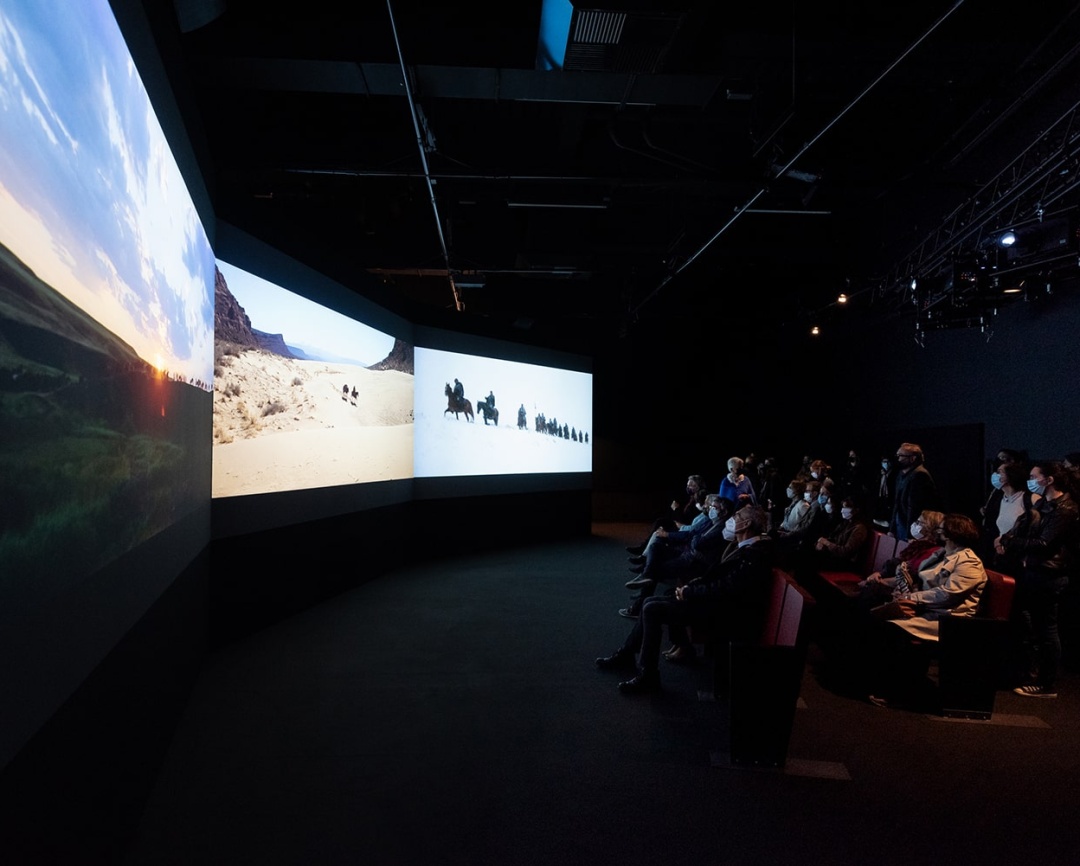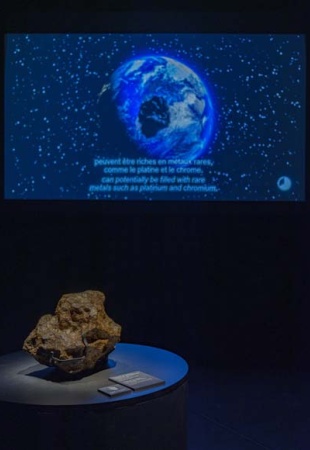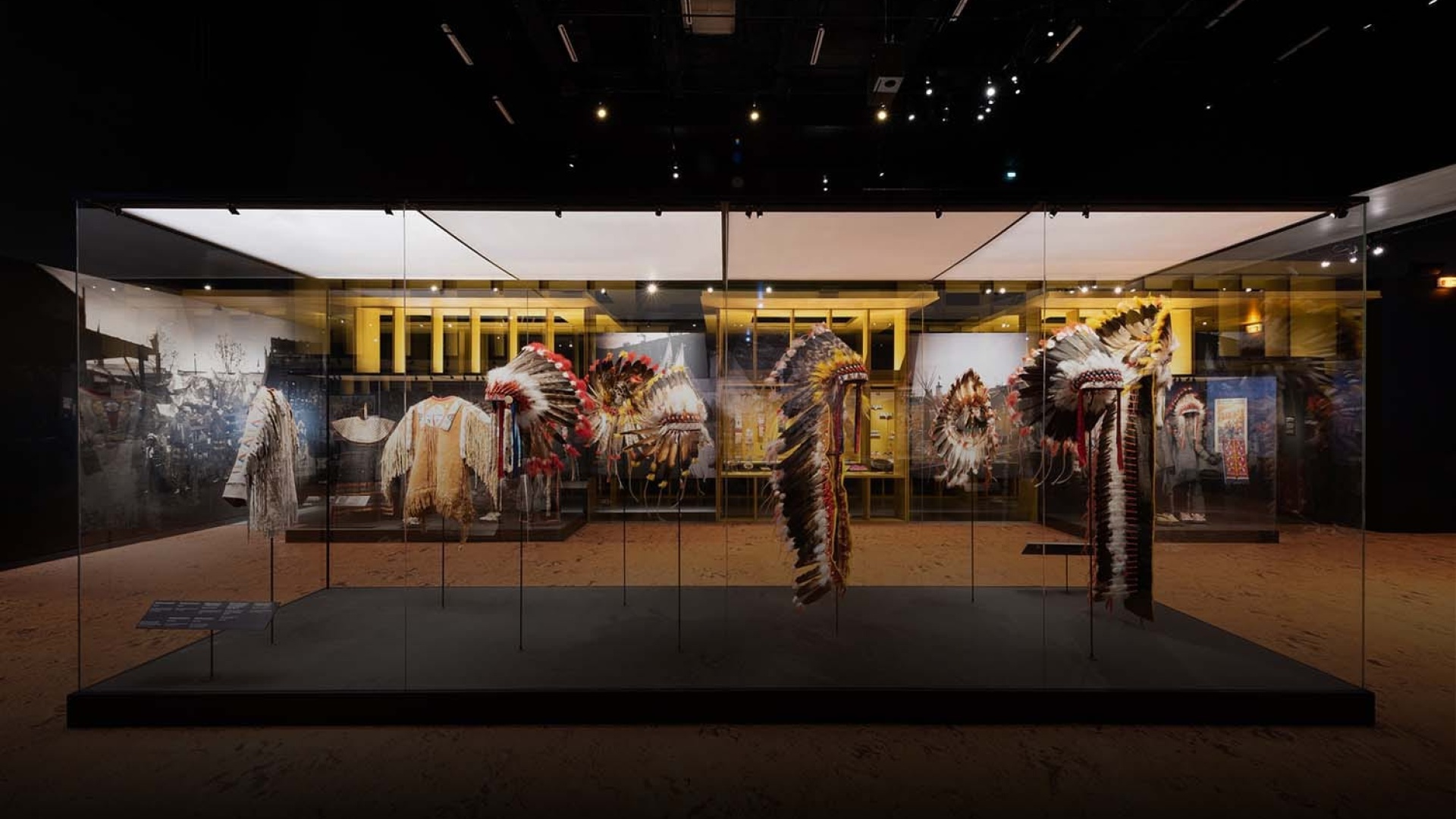
On the Trail of the Sioux
The exhibition route
First contacts, first images
In the 16th century, Europeans settlers in North America encountered communities who were assumed to belong to a uniform, homogeneous world. Over time, the French, English and Dutch learned to get the measure of their diversity, but the imagery disseminated across Europe only conveyed two visions. That of the “noble savage” living in harmony with pristine nature, and that of the “savage” in short – violent and driven by primal instincts. The latter image ended up gaining the upper hand such that, by the late 19th century, it still prevailed in popular culture.
Read more
The "Wild" West
Between 1883 and 1912, Buffalo Bill, a mythical figure of the American West, directed one of the first international travelling performances, Buffalo Bill’s Wild West. This popular and patriotic show criss-crossed first North America then Europe. For nearly a century, it channelled a simplistic yet spectacular image of Native Americans, “played” by the Lakota Sioux people. Scores of Wild West Shows and “Native American villages” followed in its wake, in turn perpetuating this vibrantly coloured, belligerent perception which conformed to the tale of a civilising territorial conquest in the face of indigenous savageness.
Read more
From Cowboys & Indians to Bison Futé in France
After winning over the crowds, Native Americans went on to gain mainstream household appeal through advertising, comics and then television. Buffalo Bill’s Sioux came in all sorts of forms, beginning with toys. “Cowboys and Indians” became a playground staple – in which the latter were often on the wrong side. Over time, stereotypes have evolved. In France, the “savage" Native American has given way to the travel-smart bison who guides drivers on the road to their holiday destination, while advertising conjures up Native American wisdom for every occasion.
Read more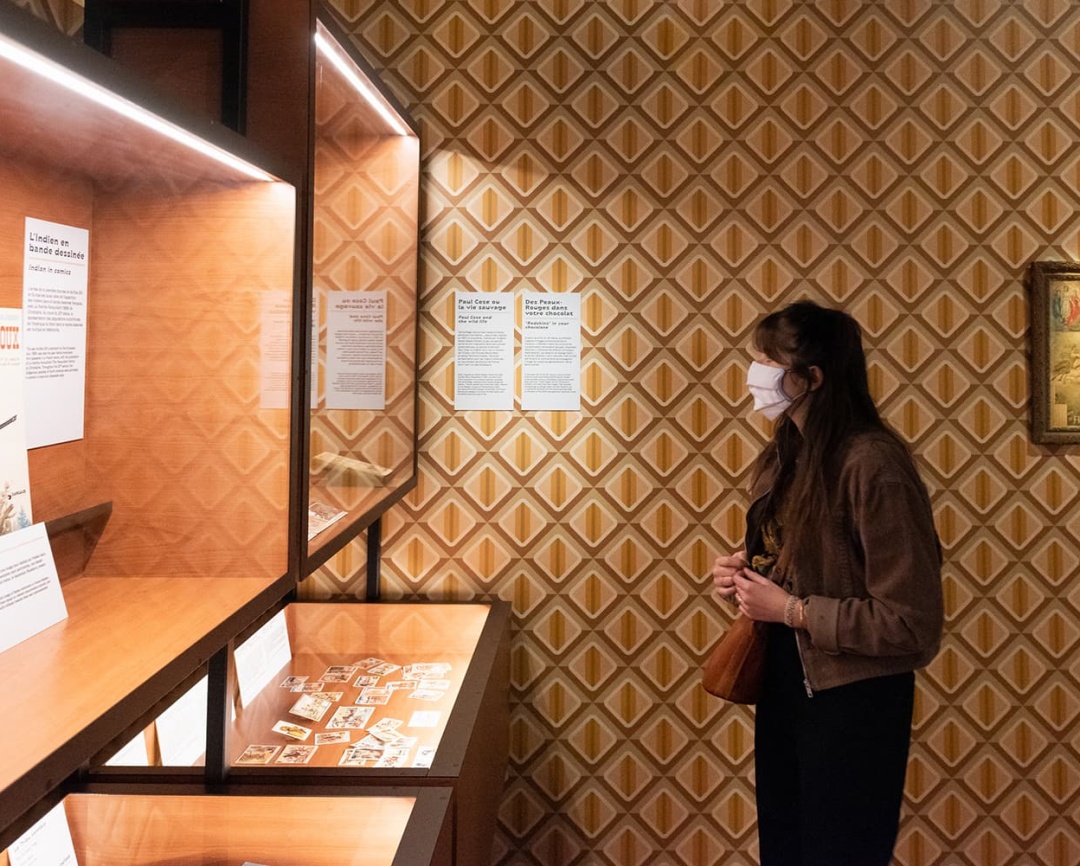
Westerns: a century of images
Hollywood movies emerged and reached the global stage in the 1930s. Raoul Walsh and John Ford invented the Western and transposed the Native American of Buffalo Bill’s outdoor shows to film. Although some of the very first movies of the genre painted a romantic, pro-Native American picture, over the decades that followed nameless savage warriors burst onto the scene with the sole aim of putting pioneering heroism in the spotlight. It was not until Broken Arrow came out in 1950 that the perception of indigenous people began to change, with movie portrayals finally becoming more realistic a full two decades later, in 1970, with the releases of A Man Called Horse and Little Big Man.
Read more
The new Native American stereotype
After the golden age of the Western, scalps and peace pipes have made way for a new image, partly a legacy of the New Age movement. We now view Native Americans as nurturing a special relationship with the forces of nature. This new stereotype ultimately chimes with the initial perceptions of this “young Nation”, which reached Europe 500 years ago. At a time when the environment has become a pressing global issue, Native Americans epitomise the role of the wise.
Read more